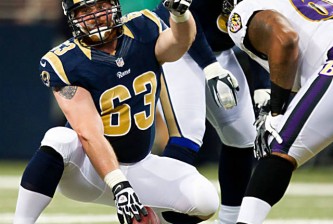At this point, my entire set of 2011 posts might as well be categorized as “offseason.” Because unless something breaks next month, the possibilities of having an “on-season” are dubious.
The 8th District Court here in St Louis issued a ruling Monday, finding with the owners and issuing a permanent stay to Judge Nelson’s lift of the lockout. While this isn’t quite a fumble on the goal line — neither side is close to scoring anything substantive — it does put the owner’s group back on offense, and they have already made a new offer to players. One that is likely to be rejected, or perhaps even ignored.
One of the most effective strategies in labor battles is to drive a wedge between your opposing party. But while the owners have mostly failed to split up a group of players — ironically a group that is in full agreement to “split up” their union — it appears from the Apellate ruling that the owners’ legal team successfully drove a wedge through their second great enemy, the U.S. Court system.
“We have serious doubts that the district court had jurisdiction to enjoin the League’s lockout, and accordingly conclude that the League has made a strong showing that it is likely to succeed on the merits.”
The intermediate courts found themselves locked between two different judicial conflicts, one initiatied by the players through the 8th Circuit, and the other initiated by the owners before the National Labor Review Board. The owners’ group tried to argue that Judge Nelson didn’t have jurisdiction to lift the lockout while the NLRB’s decision was pending. (Judge Nelson’s ruling opened a can of legal whoop-ass on that idea.) But the NFL’s lawyers kept hammering away, and the appelate court found themselves forced to pick their poison — stonewall the NLRB? or the junior member of their own district?
By picking against their own side, the appelate court has tilted the field dramatically for the owners, who, as we’ve written, want nothing more than to get the collective bargaining agreement out of the court system all together. The Players’ official appeal of the decision will come June 3rd, but they’ll be appearing before these same three judges who appear ready to wash their hands of this whole dirty business.
As fans, we have to stop looking at this in terms of winners or losers, though. Each side is still essentially stranded at midfield, and there is no game clock. Whether it comes via an anti-trust lawsuit, the intervention of the US Congress, or a simple return to the bargaining table by both parties, no one wins until an agreement is in place and football kicks off.






















